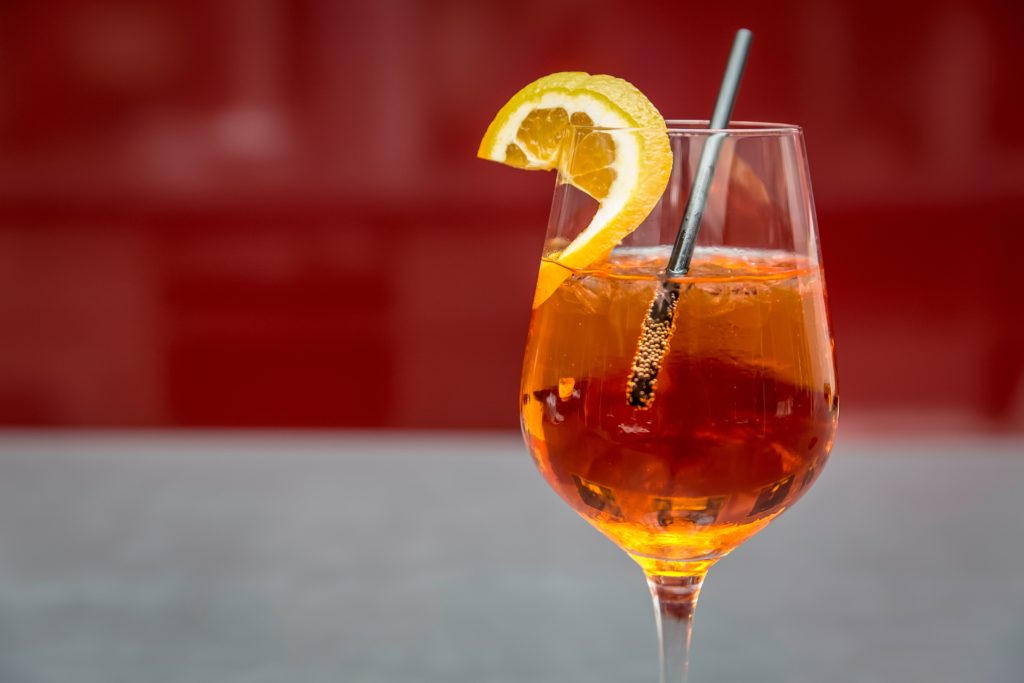
Cocktails are a complicated business, from the mixology to the glasses to the names. To get you started, drink up these cocktail slang terms and where they come from.
The origin of cocktail
While cocktail referring to a mixed drink with alcohol has been in use since at least 1803, says the Oxford English Dictionary (OED), the word itself has been around since 1750. At that time it meant “a horse with a docked tail that sticks up,” and by 1863 had also gained the sense of “characterized by a lack of gentility or good breeding; lacking social propriety.”
By 1808, it was used in horseracing to denote a “racehorse which is not a thoroughbred; a horse of mixed or inferior breed.” This “mixed breed” meaning might be how cocktail came to mean a mixed drink. Another theory, says the Online Etymology Dictionary (OEtD), is that it comes from the French coquetier, “egg-cup.” Back in 1795, an apothecary named Antoine Amédée Peychaud (the inventor of Peychaud’s Bitters) would brandy toddies in egg-cups. Eventually, the drink took on the name of the cup.
The sling is a the thing
Of cocktail, the OED also says “there was a gradual transition” from the word referring to “a specific type of mixed drink — essentially a sling” to “being used to refer to any alcoholic mixed drink.” This drink meaning of sling — consisting of “brandy, whiskey, or gin, sweetened and usually lemon-flavored” — is from about 1792. The origin is unknown, but there are a couple of theories. One says it comes from the sense of literally throwing or slinging back a drink while another cites the German word schlingen, “to swallow,” as the source. Popular “slings” include the gin and Singapore varieties.
Measure by measure
You might have noticed bartenders using a nifty silver measuring tool when they make your drinks. That’s called a jigger and measures about 1.5 fluid ounces. The OEtD says the term is from about 1836 and originally referred to a 1.5-ounce shot glass. It might come from an earlier meaning of an “illicit distillery” or else a kind of flea.
Another small measure of liquor is the nip. From about 1736, the term originally referred to “a half-pint of less of ale,” says the OED, and then came to mean any small quantity of spirits. A shortening of nipperkin, a nip might refer to a small sip of alcohol taken on the sly or a miniature bottle of any alcoholic drink.
Shaken versus stirred
We may all know James Bond prefers his vodka martinis “shaken not stirred,” but what does that mean exactly? In the former, the cocktail ingredients are put into a special shaker and, well, shaken (or tossed if you’re 1980s-circa Tom Cruise). In the latter, they’re stirred with a spoon.
But the differences don’t end there. The Cocktail Lovers says the shaken method is best for cocktails with “strong fruit juice content” while stirring is gentler and the ideal way to mix “a largely spirit-based cocktail” — like the vodka martini. Take note, 007.
Back versus chaser
Backs and chasers are the side dishes of the cocktail world: drinks that accompany the main one. For instance you might have a beer with a whiskey chaser or a Bloody Mary with a beer back. While essentially the same thing, some say the two terms have a subtle difference: a back is usually “sipped alongside another drink” while a chaser follows a drink that’s thrown back quickly.
How do you want it?
Neat? Straight up? On the rocks? It’s all about temperature and purity. A drink served neat is undiluted — for instance, a bourbon neat has only bourbon and nothing else — and at room temperature. This sense of neat originally referred to “unadulterated” wine, says the OEtD, starting way back in the 1570s. The meaning of undiluted liquor is from around 1800.
Straight up or up refers to a cocktail that’s chilled but without ice. However, to make things even more confusing, the term straight might be synonymous with neat. Finally, on the rocks means a drink poured over ice and is attested to 1949, says the OED.
Garnishes
A garnish is a little extra something added to a drink, like a curly twist of citrus rind (attested to 1958) or an olive. Speaking of olives, they’re the default garnish for martinis so if you don’t like them, get your martini “with a twist” instead. If you like olive juice, you’ll want a dirty martini or if you prefer a pearl onion, order up a Gibson.
Swizzle that stick!
Some call them tacky, others call them collectible. Swizzle sticks are used to stir drinks but also act as sometimes elaborate drink decorations. The OED’s earliest citation is from 1879. Earlier is swizzle (1813), referring to various alcoholic drinks. That might come from switchel, a beverage of molasses, vinegar, and sometimes rum.
Mixers
Some cocktails are a mixture of alcohols only. For instance, a Manhattan is made of whiskey, vermouth, and bitters. Others contain mixers or nonalcoholic drinks, like orange juice. Mix that with some vodka and you have yourself a screwdriver. Add ginger beer and lime juice to that vodka and you have a Moscow mule. For its Kentucky cousin, just swap in bourbon for the vodka. A gin and tonic is (you guessed it) gin and tonic water, a gin fizz is gin, lemon juice, sugar, and tonic water, a jack and ginger is whiskey and ginger ale, and a rum and Coke has rum and, you guessed it, Coke.
Thirsty for more? Check out our posts on funny drink names and beer terminology, and this wine list.